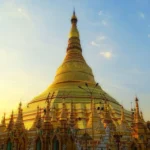
The Sistine Chapel is a Catholic chapel in the Apostolic Palace in Vatican City in Rome. The Sistine Chapel was originally known as the Cappela Magna, but Pope Sixtus IV restored and renamed the chapel between 1477 and 1480. Papal activity, both functional and religious, are done from that moment on. While Sixtus IV was Pope, several Renaissance painters were commissioned to create the frescoes of the Life of Christ and the Life of Moses. The ceiling of the Sistine Chapel was painted by Michelangelo between 1508 and 1512 at the request of Pope Julius II. The Sistine Chapel is home to some of the most famous works of art in the world, and its beauty is admired by millions of tourists every year.
Michelangelo completed the entire ceiling without being able to see his work as a whole, since the scaffolding remained in place right until the very end.
The Sistine Chapel got its name from the pope at the time Sixtus IV. Sixtus is ‘Sisto’ in Italian.
Although the frescoes have proven very resilient, there is a small part of the sky in the panel depicting Noah’s escape which is missing, due to an explosion at a nearby gunpowder depot in 1797 that caused the plaster to fall off.
The dimensions of the Sistine Chapel are the same dimensions as the Temple of Solomon, on Jerusalem’s Temple Mount, as described in the Old Testament of the Bible.
The many nudes in the frescoes have caused controversy in the past. In 1564, the Council of Trent deemed the images indecent and ordered Daniele da Volterra to cover them up with fig leaves, clothing and other items.
The Sistine Chapel is 134 feet long, 44 feet wide, and 68 feet tall.
During the major restoration efforts of the 1980s-1990s, many of these additions were removed, revealing numerous, previously unseen details.
The first Mass in the Sistine Chapel took place on August 15th, 1483. This was also the Feast of the Assumption. During this first Mass, the Sistine Chapel was consecrated, and it was also dedicated to the Virgin Mary.
The College of Cardinals meets at the Sistine Chapel to submit their votes under oath each time a new Pope is elected, as they have done since 1492.
Artists that worked on the Renaissance frescoes included Pietro Perugino, Pinturicchio, Domenico Ghirlandaio, Cosimo Roselli, and Sandro Botticelli.
There is a small side room nicknamed the Room of Tears. This is where the chosen candidate is taken after winning the election, to relieve the emotion of the election process.
The Sistine Chapel, although a popular site for tourists, is also the pope’s private chapel.
Cameras are banned during visiting times to protect the paintings.
Prior to Michelangelo’s painting of the Sistine Chapel’s ceiling, it had been painted by Piero Matteo d’Amelia with a blue sky and stars.
The greatest danger posed to the Chapel by tourists is invisible to the naked eye: the sweat, carbon dioxide and skin flakes of twenty-five thousand visitors a day.
While Michelangelo painted the ceiling of the Sistine Chapel, he stood on a platform that covered half the chapel. He was not able to stand on the floor and look up at his work, yet he still managed to create a work on a vast scale painting from only a few inches below.
Michelangelo features God six times throughout the frescoes.
There are nine panels at the center of the ceiling of the Sistine Chapel. Michelangelo chose to paint stories in the Bible from Creation to Noah. He painted in reverse order so that his best work would be his depiction of God, after he had the experience of painting the rest of the frescoes first.
The external structure of the Sistine Chapel is remarkably plain. There’s no decoration or grand entrance, for example. This is quite incredible when you consider both the beauty of the inside, and of course, the fact that it is the Pope’s private chapel.
It is estimated that approximately 25,000 people a day visit the Sistine Chapel. This equals about 5 million each year. This brings in approximately 80 million Euros each year in revenue for Vatican City.
The chapel was created for worship, but the design did include strong and thick walls – which were intended to protect the Vatican against any attacks.
The southern wall of the Sistine Chapel includes the paintings of the Stories of Moses.
When he was commissioned to paint the Sistine Chapel ceiling, Michelangelo was 30-years old.
The northern wall of the Sistine Chapel includes the paintings of the Stories of Jesus.
ichelangelo hated painting the ceiling so much that in 1509 he even wrote a poem lamenting to his friend Giovanni da Pistoia how he’d “grown a goiter from this torture,” due to the physical strain of the work.
The eastern wall of the Sistine Chapel includes the Resurrection of Christ, and Disputation over Moses’ Body paintings.
Although many believe Michelangelo painted the ceiling lying on his back, he actually constructed his own scaffolding, so that he could paint standing up for more precision and control.
Michelangelo painted the ceiling of the Sistine Chapel but he also painted the Last Judgement over the altar.









